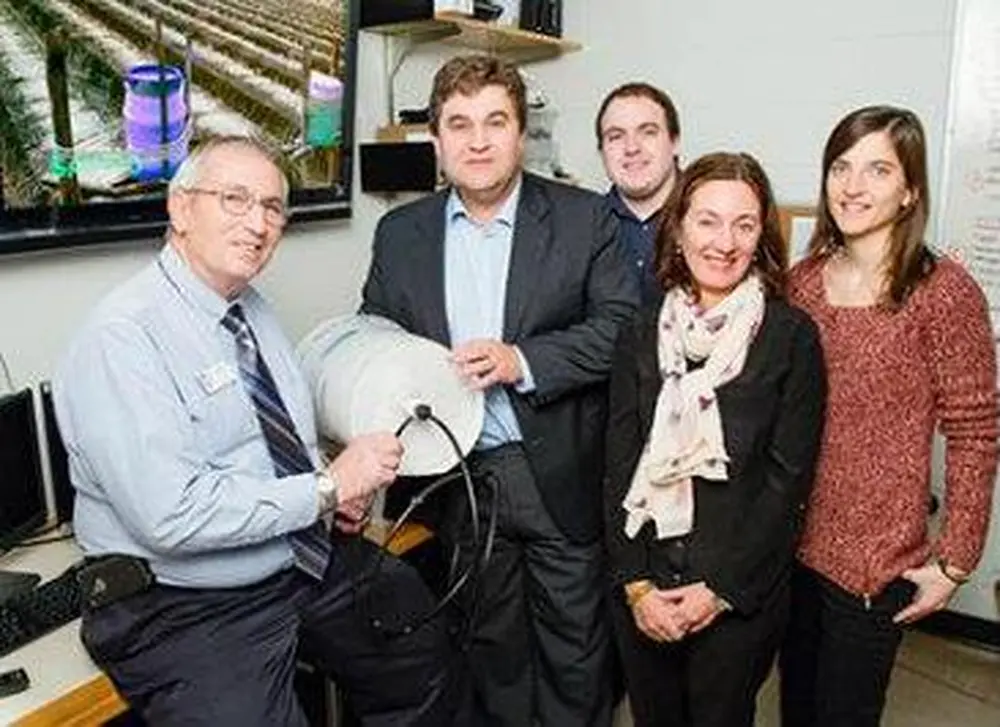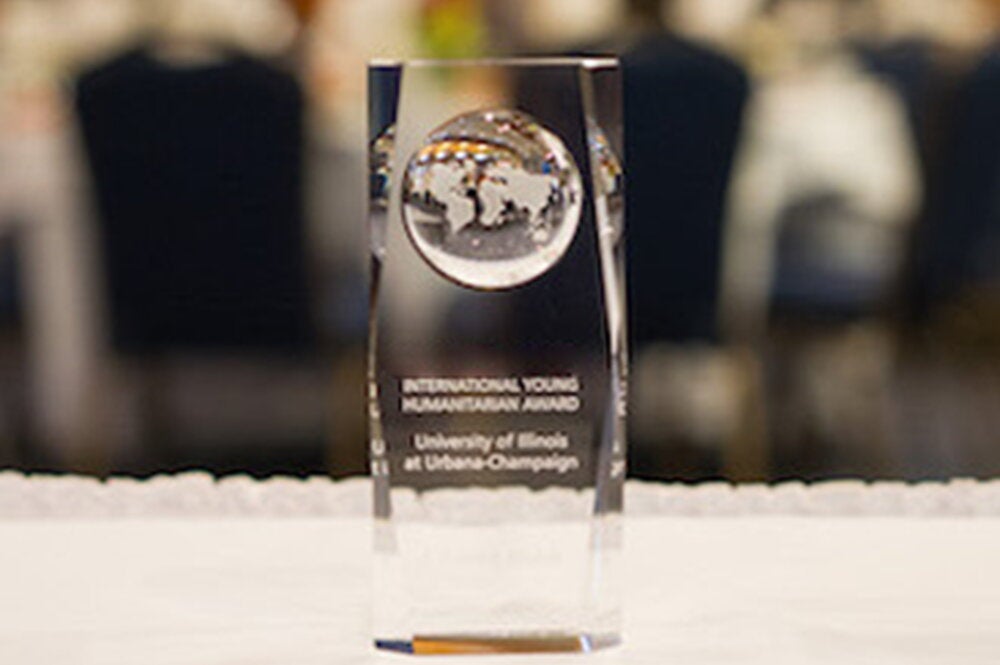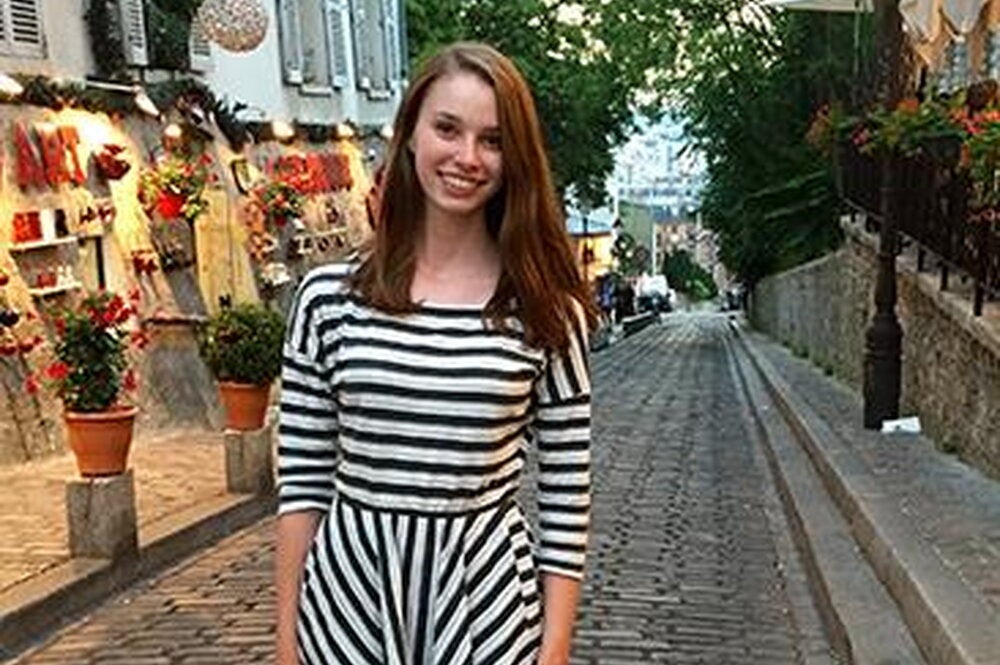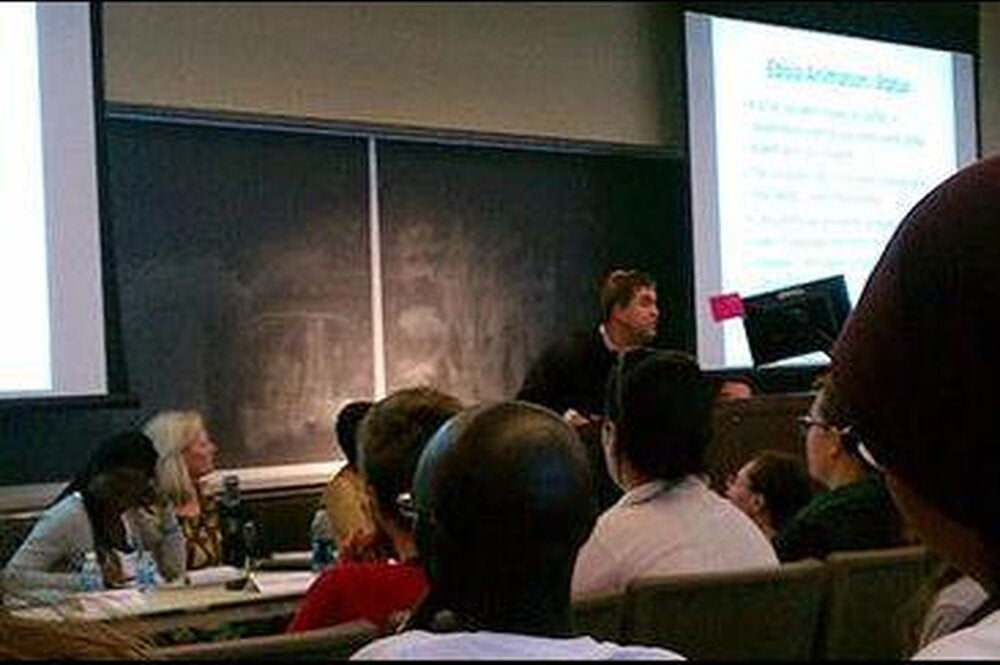

An initiative at Illinois known for its animated educational videos is part of an effort to teach subsistence farmers gardening methods that could not only help them put food on their tables but also conserve water, deal with drought, and make an income.
This educational effort, led in large part by nonprofit groups and private donors, is getting a boost from Scientific Animations Without Borders, an initiative that produces animations that can be played on cellphones and other devices.
SAWBO’s videos focus on health, agricultural production, and development, ranging from Ebola and cholera prevention to planting. They’re narrated in local languages, reaching many who cannot read.
As part of this latest initiative, the videos demonstrate how to build raised planting beds using layers of vegetation, animal manure and soil. They also show how to install a drip irrigation system. Healing Hands International provides the drip irrigation buckets, lines and hardware to those it serves, but most of the techniques in the videos also can be adapted by people who have no access to drip lines.
Carl Burkybile, the agricultural director of Healing Hands International, a faith-based, humanitarian nonprofit group that teaches ”survival gardening” first contacted SAWBO co-founders Barry Pittendrigh, professor of entomology, and Julia Bello-Bravo, assistant director of Center for African Studies, in summer 2014.
Burkybile, an Urbana, Ill., resident, asked SAWBO to work with him to develop animated videos to help information on survival gardening reach more people.
“This is exciting from my perspective,” Bello-Bravo says. ”Here is someone from the community who was already going global with important agricultural information. He worked with us on every detail of these videos, and now he is actively sharing them globally.”
The SAWBO team routinely works with community educators to develop educational animations to meet their needs. Today, SAWBO offers dozens of videos in more than 20 languages. The video developers consult international experts on the topics the animations address. The videos are made available at no cost to the public and to educators who can share them widely.
“If we can partner with a group, even if they can’t bring financial resources to the table, sometimes they bring even more valuable resources: expertise, time and goodwill,” Pittendrigh says. “Sometimes you can move mountains with goodwill.”
Burkybile says that he’s developed survival gardening handouts in English and Spanish, but many poor farmers are illiterate. With SAWBO’s cellphone videos, they can learn these methods without even knowing how to read.
“We say to farmers, don’t think about what you don’t have; think about what you do have,” he says. “So they have vegetation, animal manure, kitchen scraps. They can make their own fertilizer.”
If they lack drip lines, farmers can water the plants by hand. If water is scarce, they are instructed to water only at the base of each plant. The videos show how to build 15-meter long planting beds that are one meter wide with two rows of plants per bed.
“With 10 gallons or 40 liters of water per day, they can raise enough vegetables to feed a family of five to seven during the dry season,” Burkybile says. “So if one bed will feed your family, the second one is income, and the third one and the fourth one. So first we want to feed the family and then have an income so that the kids can get an education and the family can be productive and prosperous.”
The survival gardening videos are now available in English, Spanish and French, and soon will be translated into Swahili, Creole and Portuguese. So far, the videos have been shown in El Salvador, Guyana, Haiti, Honduras, Kenya and South Sudan, Burkybile says.


